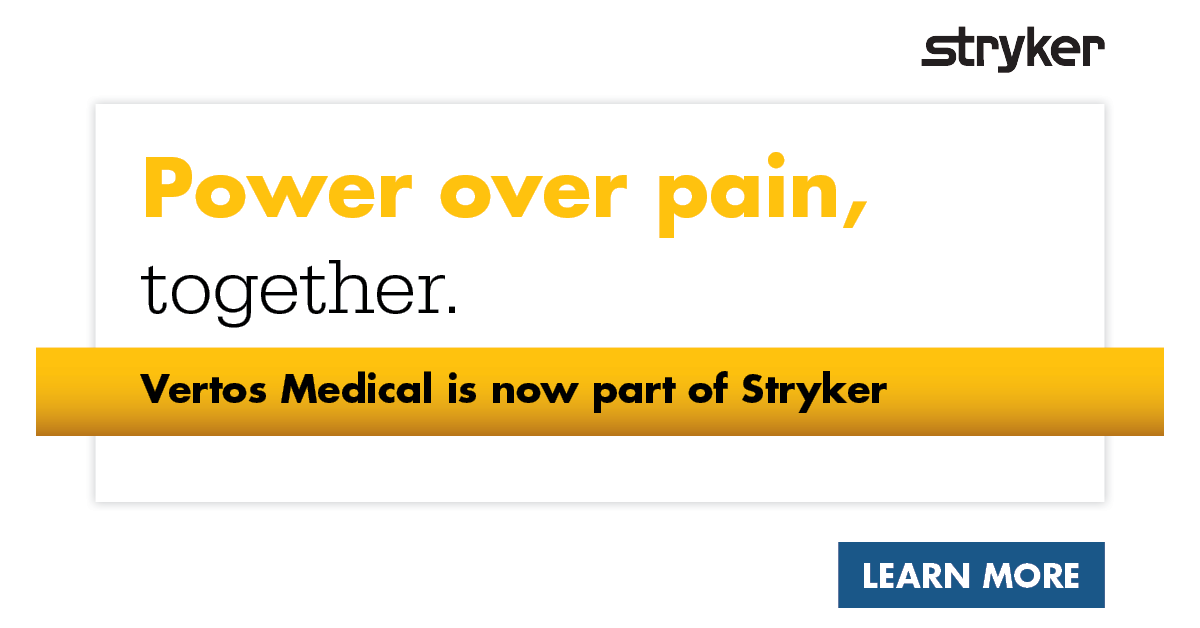Pain Management Strategies for Lumbar Spinal Stenosis
Published March 26, 2021
Did you know… you don’t have to live with back pain associated with lumbar spinal stenosis? More than two million patients nationwide are diagnosed with lumbar spinal stenosis annually, but not all of them know about the treatment options available to relieve their pain. Here, we break down some of the options and methods available, and help you understand if the mild® Procedure might be right for you.
What is Lumbar Spinal Stenosis?
Best visualized as a kink in a drinking straw, lumbar spinal stenosis is a condition in which the lower spinal canal narrows and compresses the spinal nerves in the lower back. Lumbar spinal stenosis usually develops slowly over time. It can be genetic or related to a condition present at birth, but is most often a degenerative condition. It’s prevalent in ~20% of patients aged 60+, so if you have lumbar spinal stenosis, you are not alone. It’s most common cause is natural, degenerative changes in your spine as you age. And it can get painful, quick.
Symptoms Include:
- Pain or numbness in the lower back when standing upright
- Pain, numbness, heaviness or tingling in upper legs or buttocks when walking
- Pain when lying down that may be relieved by curling into the fetal position
Those with lumbar spinal stenosis may experience temporary relief when bending forward while sitting or standing as pressure on the spinal cord is released and space in the spinal canal is “opened.” Common actions to relieve your pain may include sitting in a chair, leaning over a shopping cart, or using a walker or cane.
One common misconception is that back pain is part of aging and cannot be avoided or treated. However, it’s helpful to know, there are specialized interventional pain doctors who are trained to help patients find long term relief from chronic back pain, like that associated with lumbar spinal stenosis. So, rather than avoiding exercise and activity that trigger your back pain, it is encouraged that you schedule an appointment with a doctor who can help.
How Do I Know if I Have Lumbar Spinal Stenosis?
Only a doctor can truly diagnose the condition, but there is a quick self assessment that can help you provide your doctor with the right information about your symptoms.
- Place your feet shoulder width apart and stand in place
- Start timing how long you can stand still without pain
- Stop timing when you need to rest, sit down or lean forward for relief
- Note your time and the symptoms you experience to discuss with your doctor
Your doctor will review your medical history and symptoms, and diagnose lumbar spinal stenosis with imaging that may include an MRI, X-Rays or a CT scan. Then, they will review the best treatment options for you.
>Take the mild® survey to see if it might be right for you.
So, What Are My Options?
Armed with the right information, your doctor will typically offer treatment options based on their safety profile. If you seek care from a specialized interventional pain doctor, they will generally offer conservative treatments and minimally-invasive procedures in an effort to avoid surgery.
Conservative Treatments
The first course of action may be conservative treatments like over-the-counter pain medication, physical therapy or chiropractic care. While their safety profile may be low, these treatments aren’t always effective for everyone.
Epidural Steroid Injections
If the pain is still present, your doctor may recommend an epidural steroid injection (ESI). These injections typically bring relief, but often, that relief is only temporary. If long-term relief doesn’t come after your initial ESI, consider the mild® Procedure as your next step.
What is the mild® Procedure?
mild® stands for minimally invasive lumbar decompression. The mild® Procedure addresses a major root cause of lumbar spinal stenosis by removing small pieces of bone and thickened ligament. This restores space in the spinal canal, which reduces the compression of the nerves, or “removing the kink in the drinking straw.” mild® typically takes less than an hour and can be performed through a single, tiny incision smaller than the size of a baby aspirin (5.1 mm). The mild® Procedure has a safety profile similar to that of an epidural steroid injection, but with lasting results, and patients typically resume normal activity within 24 hours with no restrictions.
Does the mild® Procedure Work?
mild® has been performed on thousands of patients to provide lasting pain relief and increased mobility. mild® has demonstrated excellent long-term durability with significant improvements in both pain and mobility. In a one-year study performed by the Cleveland Clinic, mild® patients were able to increase their average walking distance from 246 feet to 3,956 feet and their standing time from 8 minutes to 56 minutes with less pain.
What do mild® Patients Say?
“After the procedure, I had no pain whatsoever. I could walk, I could go up and down the stairs, I could get in and out of the car. I mean, I felt great.”
Dante Lavino, mild® Patient
“My friends and family can’t believe the difference in what I am doing now since I had the mild® Procedure. Grandma is back to cookin’!”
Lynn Ballard, mild® Patient
“It just changed everything… before I’d say ‘Man, I wish I could’ but now I say ‘count me in, you know I’m ready.’”
Ronnie Turner, mild® Patient
Click here for more patient stories. To learn more, find a doctor who may be able to help.

